Brand-new to the market at the end of July 2021, the Huawei P50 Pro comes with rear and selfie cameras whose image quality placed it at the top of our DXOMARK rankings in both categories. As the headline indicates, it is also the new top performer in our Display protocol tests. Read on for the details.
Key display specifications:
- OLED screen
- Size: 6.6 inches (91.3% screen-to-body ratio)
- Dimensions: 158.8 x 72.8 x 8.5 mm (6.25 x 2.87 x 0.334 inches)
- Resolution: 2700 x 1228 pixels
- Aspect ratio: 19.8:9, 450 ppi
- Refresh rate: up to 120 Hz
- Touch sampling rate: up to 300 Hz
About DXOMARK Display tests: For scoring and analysis in our smartphone and other display reviews, DXOMARK engineers perform a variety of objective and perceptual tests under controlled lab and real-life conditions. This article highlights the most important results of our testing. Note that we evaluate display attributes using only the device’s built-in display hardware and its still image (gallery) and video apps at their default settings. (For in-depth information about how we evaluate smartphone and other displays, check out our articles, “How DXOMARK tests display quality” and “A closer look at DXOMARK Display testing.”)
Test summary
Scoring
Sub-scores and attributes included in the calculations of the global score.
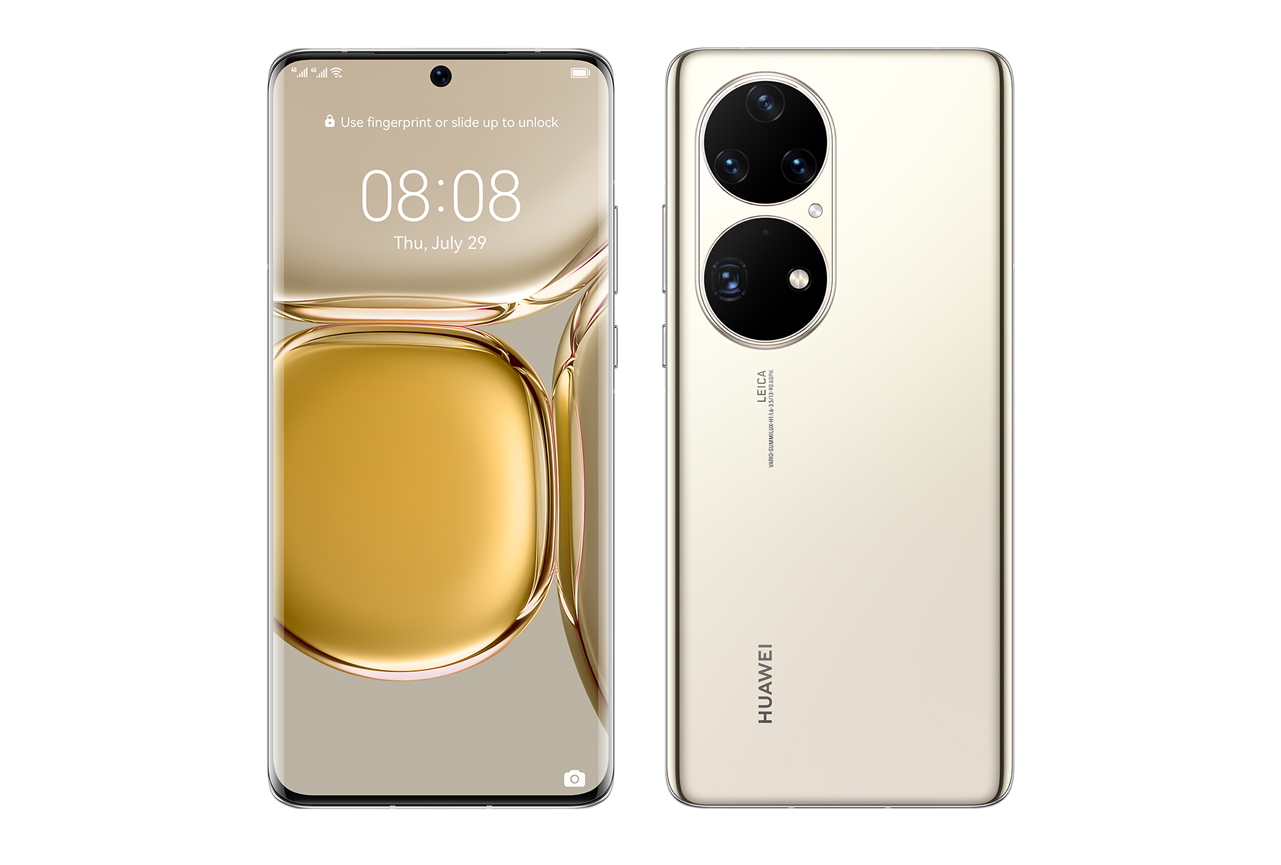 Huawei P50 Pro
Huawei P50 Pro


 83rd
83rd
 55th
55th
Pros
- Brightness is appropriate for watching HDR10 videos.
- Readability is pleasant in low light and in indoor conditions.
- Touch is smooth and accurate.
- The device is almost flicker-free.
Cons
- Default brightness is too low for pleasant readability in outdoor conditions.
- A slight yellow/green cast is noticeable in most tested conditions.
- Dark tones lack detail when watching HDR10 video content.
- Frame drops are sometimes noticeable when starting video games.
With a score of 93, the Huawei P50 Pro is the new leader in our Display protocol rankings among devices tested to date. With good, very good, and sometimes even excellent performances in nearly every category (including a significant improvement in Video, where its P40 Pro predecessor fell a bit short), our engineers found only two things that could use a bit of improvement: too-low default brightness in outdoor conditions and the presence of aliasing artifacts.
In this review, we compare the P50 Pro with the OnePlus 9 Pro, the Samsung Galaxy S21 Ultra 5G (Exynos), and the Apple iPhone 12 Pro.

Readability
Huawei P50 Pro
70
76
DXOMARK uses the device’s gallery app to show static (still image) content when measuring the device’s display for brightness, contrast, gamma, blue light impact, etc.
While a few points below the category current top score (jointly held by the TCL 10 Pro and the Exynos version of the Samsung Galaxy S21 Ultra 5G), the Huawei P50 Pro’s readability score nonetheless represents a solid improvement over the P40 Pro (66).
Note on the graph for brightness at 30 000 lux: Even though our lab tests measured the Huawei’s maximum brightness in auto mode at 554 cd/m2, the device manages to go up to 863 cd/m2 under bright lighting conditions when manually set to maximum brightness.
The new Huawei device offers a proper level of brightness in a low-light environment, as illustrated below:

Brightness in shady outdoor conditions is quite comfortable, even if the device could be better tuned, as images lack contrast:
But it is under direct sunlight where the P50 Pro is truly difficult to read:
In short, readability at default settings is good so long as ambient light conditions do not require maximum display brightness.
On the plus side, the device’s adaptations to changes in ambient lighting are smooth and quick, with no visible steps. It is a bit slow when reacting to rising light levels, however.
The Huawei P50 Pro loses brightness and contrast when viewed on angle, but it is still readable.

The P50 Pro has good brightness uniformity, showing only some slightly noticeable darker areas on the bottom and along the edges.
The blue light filter (BLF) does not affect contrast, thus the Huawei device’s readability in dark conditions remains suitable.

Color
Huawei P50 Pro
83
92
DXOMARK uses the device’s gallery app to show static (still image) content when measuring the device’s display for white point, gamut, uniformity, color fidelity, and blue light filter impact, etc.
Like many other devices, the Huawei P50 Pro does not adapt its color to the ambient lighting.
Indoors, a slight yellow-green cast is often noticeable, although the rendering is not unpleasant:
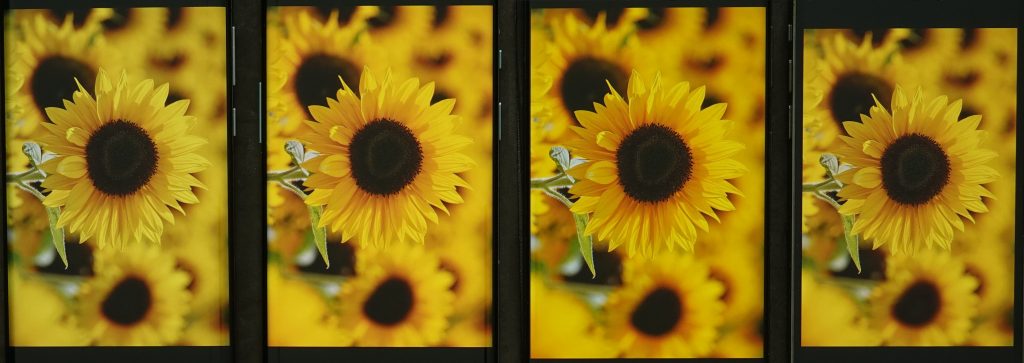
This yellow/green cast is more pronounced in outdoor conditions, as shown in the illustrative photo array below, shot under full sunlight conditions:
The charts below show the Huawei P50 Pro’s color reproduction fidelity when under 0 lux lighting (in other words, in pitch darkness) and under 1000 lux lighting in the standard sRGB color space. The center of each circle is the target color; anything outside the circle represents a noticeable color difference. The further the tip of the arrow is outside of the circle, the more a user will notice the difference between the color on the display and the original color of the source material. Color is more faithful at 1000 lux than at 0 lux, but broadly speaking, the Huawei P50 Pro has good color fidelity.


When viewed at an angle, a shift towards blue is noticeable at first, which then turns to a slight yellow-green cast.
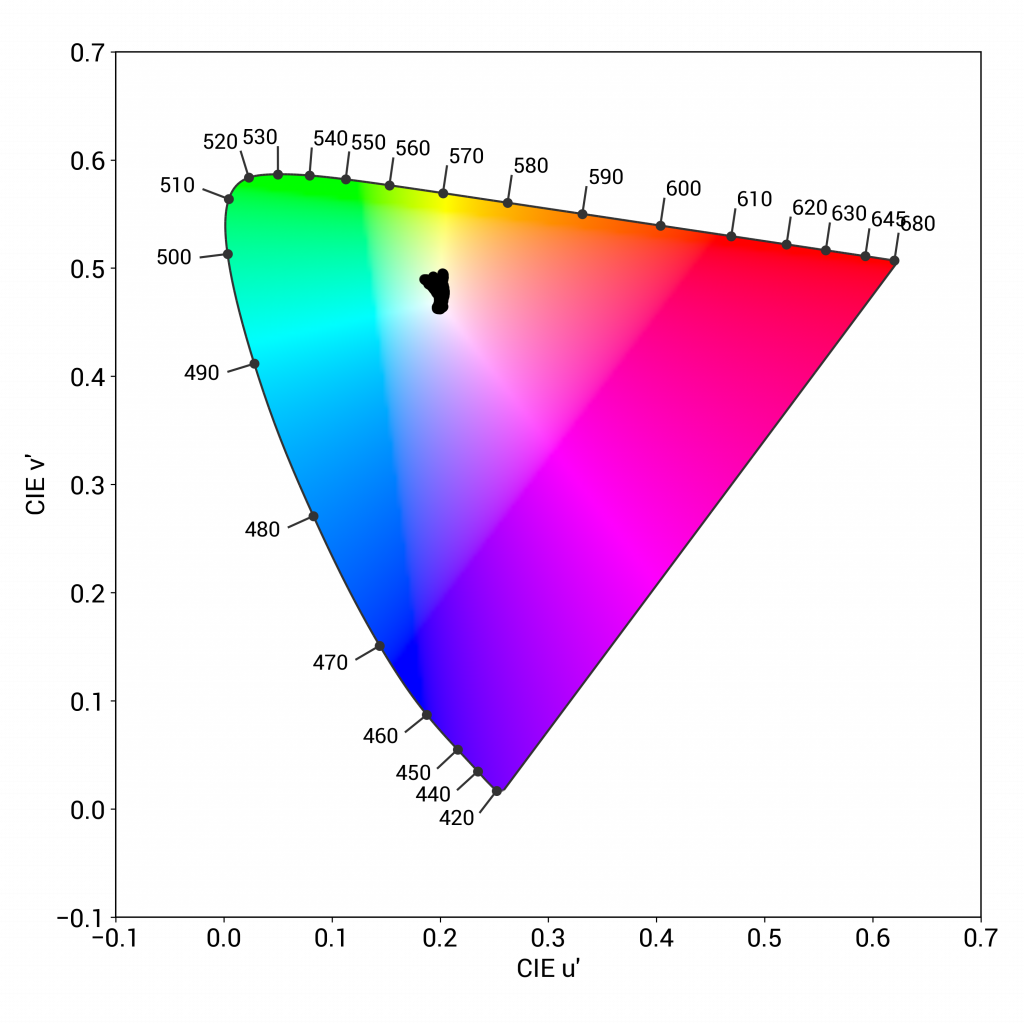
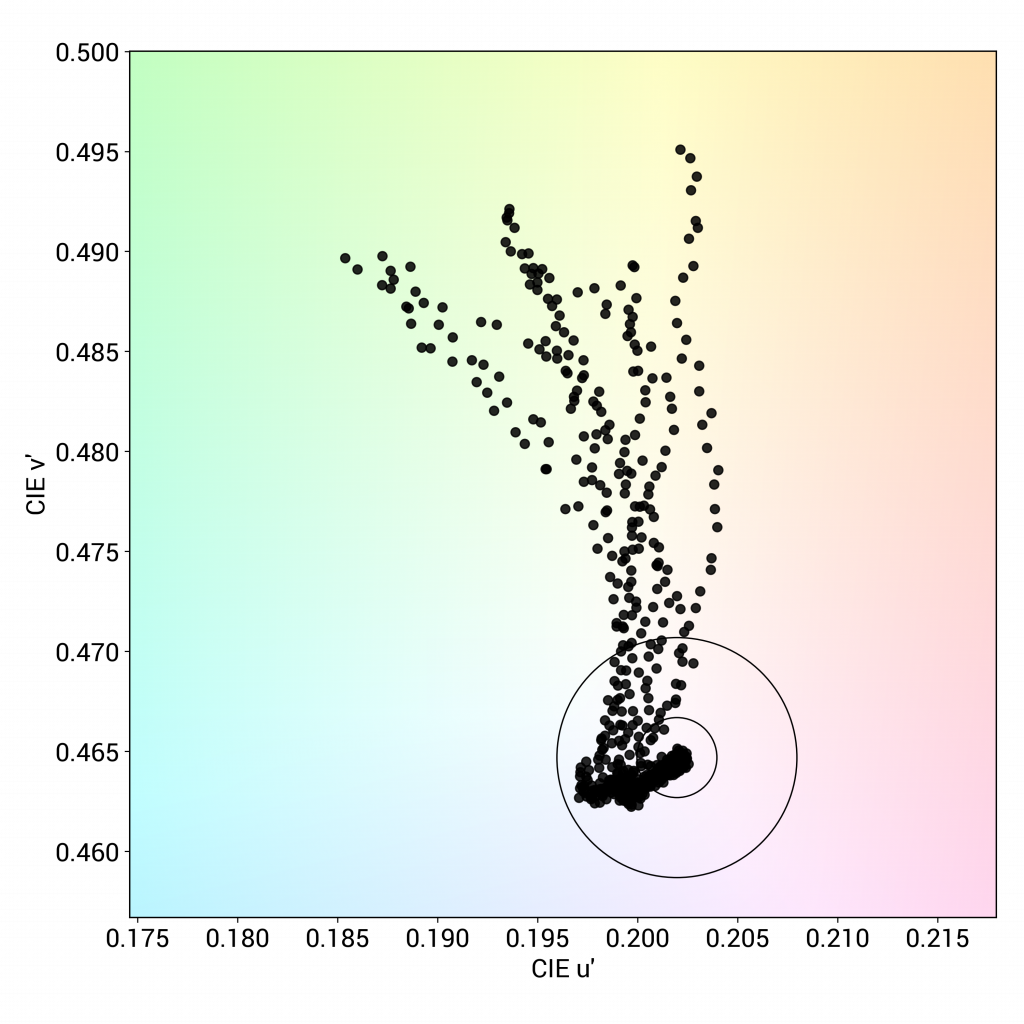
You can see the color shift from the on-axis view…
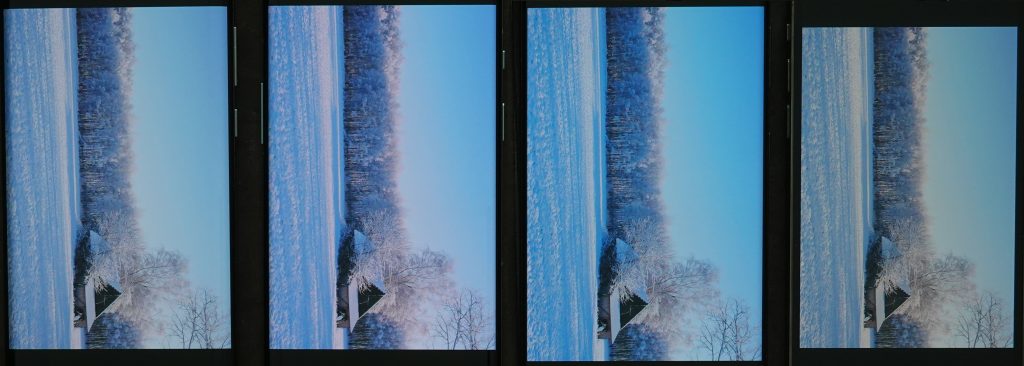
… to a noticeably different rendering at a 45° angle:
The BLF is not very effective at filtering out blue light; and even though the Huawei device shows a slight yellow cast, the color remains acceptable.

Video
Huawei P50 Pro
83
91
DXOMARK uses the device’s video (or browser) app to show dynamic content when measuring the device’s display for brightness, contrast, gamma, and color.
Video is the attribute for which the Huawei P50 Pro showed a truly significant improvement over its predecessor, the P40 Pro (61 points). The P50 Pro is brighter overall, which has a positive impact on its video color rendering and makes it a good device for watching HDR10 content.
The P50 Pro renders HDR10 mid-tones well, but darker details can sometimes be lost.
Video contrast, from left to right: Huawei P50 Pro, OnePlus 9 Pro, Samsung Galaxy S21 Ultra 5G (Exynos), Apple iPhone 12 Pro
The same very slight yellow cast as for still images is visible on HDR10 videos, though the P50 Pro’s color is almost as good as that of the Samsung (the current category leader).
The yellow/green color cast is perceivable on skin tones, but the rendering is nonetheless acceptable.

Motion
Huawei P50 Pro
82
87
The Huawei P50 Pro showed a few frame drops at 30 fps and 60 fps in our lab tests, as illustrated below:
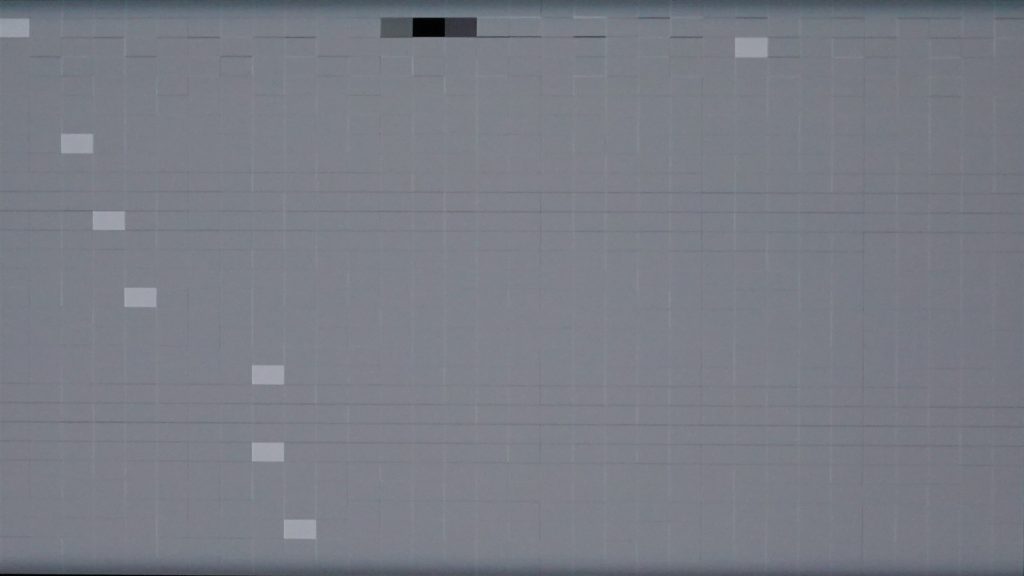
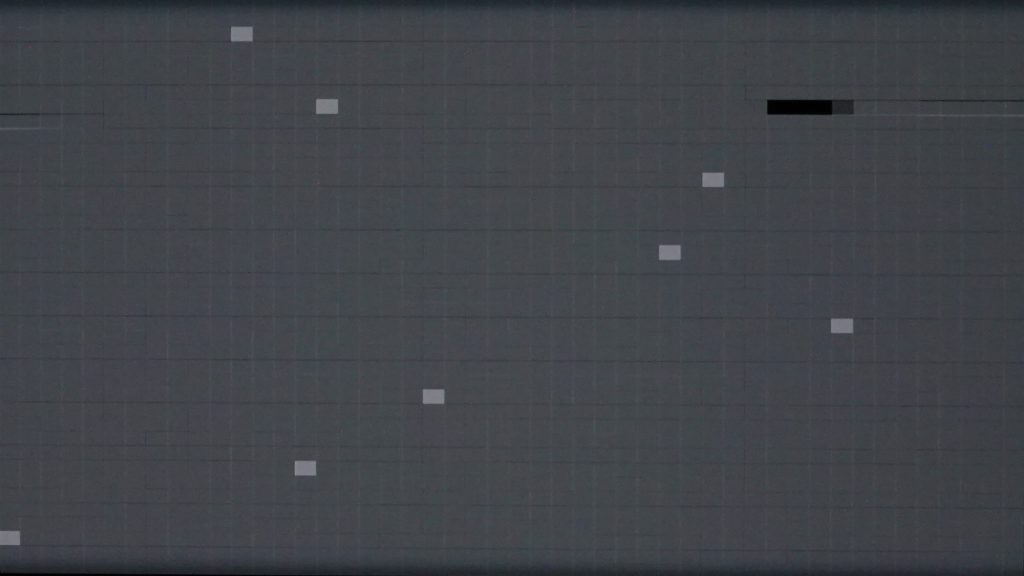
However, frame drops are sometimes noticeable when gaming, especially (but almost exclusively) during the first couple of minutes right after launching a game. The Huawei device does not show any frame duplications and appears sharp. And unlike many other smartphones that tend to show at least some slight delays, the P50 Pro shows excellent reactivity in this regard, as videos resume instantly after moving the play slider forwards and backwards, making for a very pleasant user experience.

Touch
Huawei P50 Pro
82
85
The Huawei P50 Pro did very well in our touch tests. Corners and edges are easy to use and the device is acceptably smooth when playing video games. While scrolling is smooth when web browsing, there’s a noticeable step when swiping through photos in the gallery app — contributing to the reason that the Huawei device did not tie or best the current category leader (the OnePlus 9 Pro at 83 points).
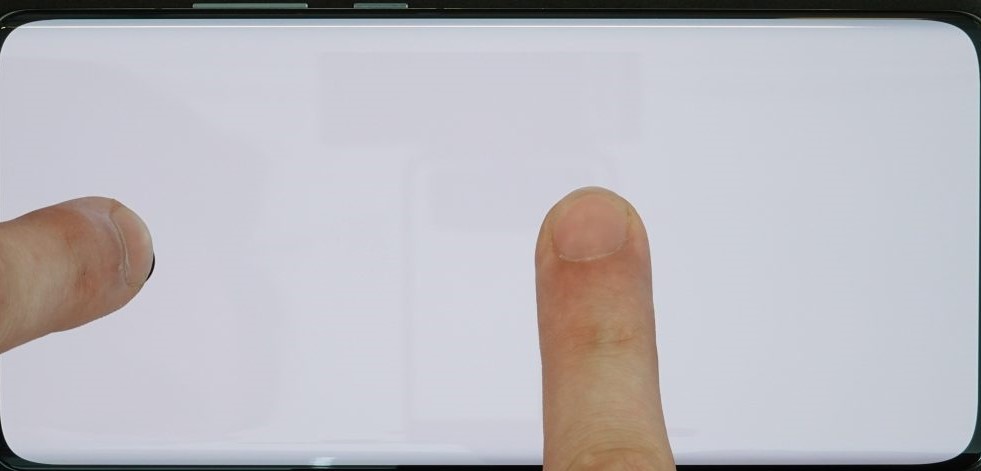
Huawei P50 Pro, touch zooming accuracy
The Huawei P50 Pro’s notch is centered, which can be a bit uncomfortable when gaming or watching a movie in full-screen mode.
With a frequency of 1448 Hz (not visible to the human eye), the Huawei P50 Pro has excellent control of flicker. The P50 Pro also handles ghost touches well; further, while judder is slightly visible at 24 fps, it is not visible at 30 and 60 fps. In fact, the only negative point our engineers found in the Huawei device’s management of artifacts was for aliasing, which is visible while playing video games.
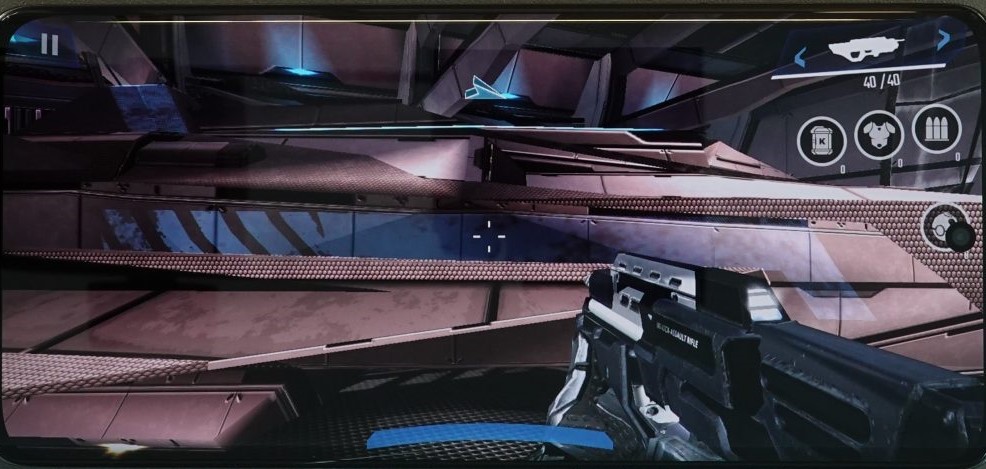
Closeups of the stair-step effect:
Conclusion
The Huawei P50 Pro is the new number one in our Display protocol ranking, and deservedly so. It is an exceptionally well-balanced device, with its few weak points overwhelmingly mitigated by its strong results in nearly every testing attribute.


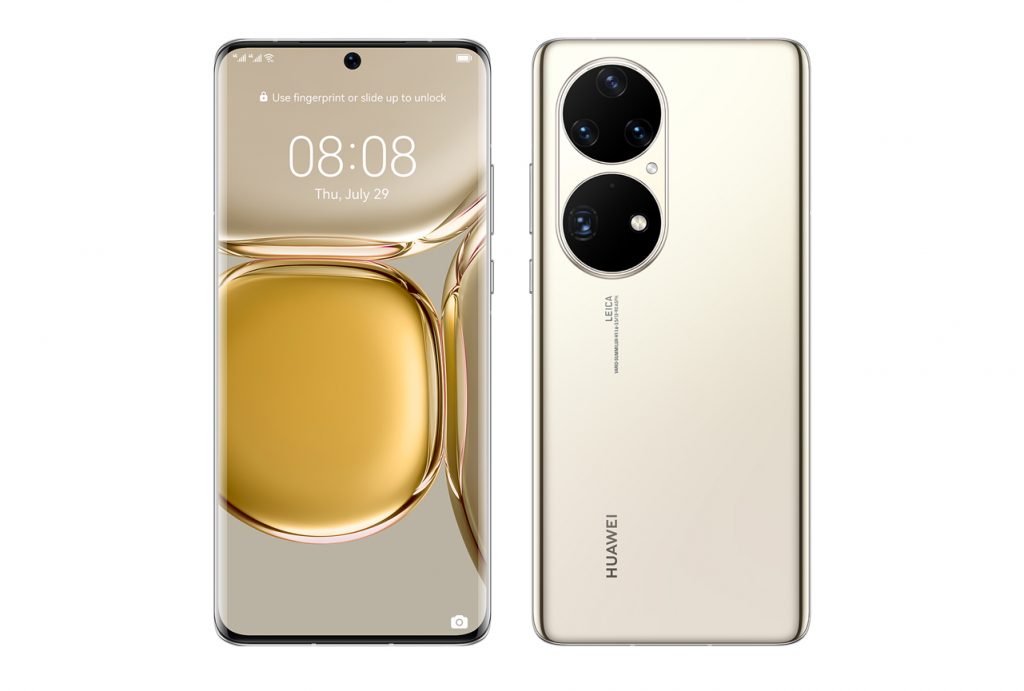





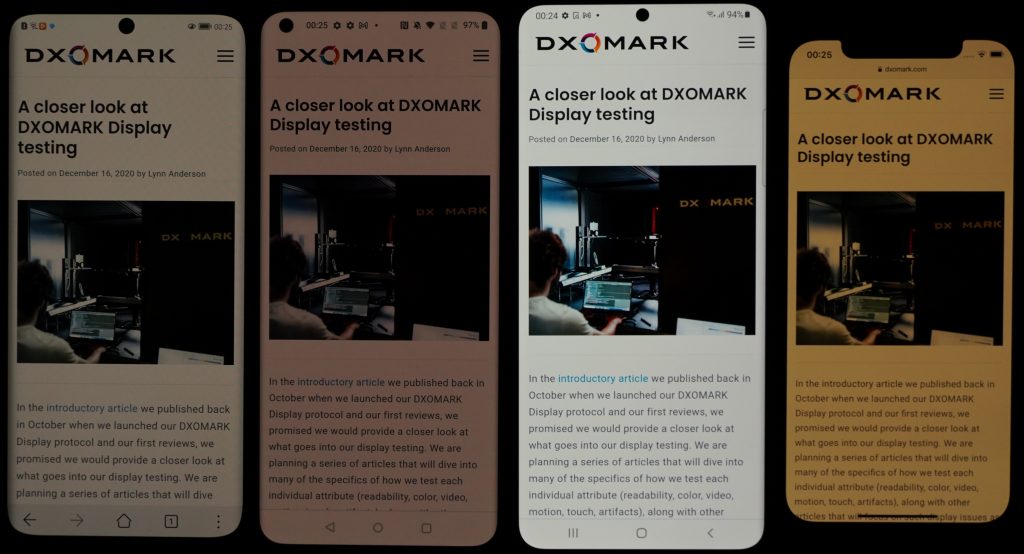

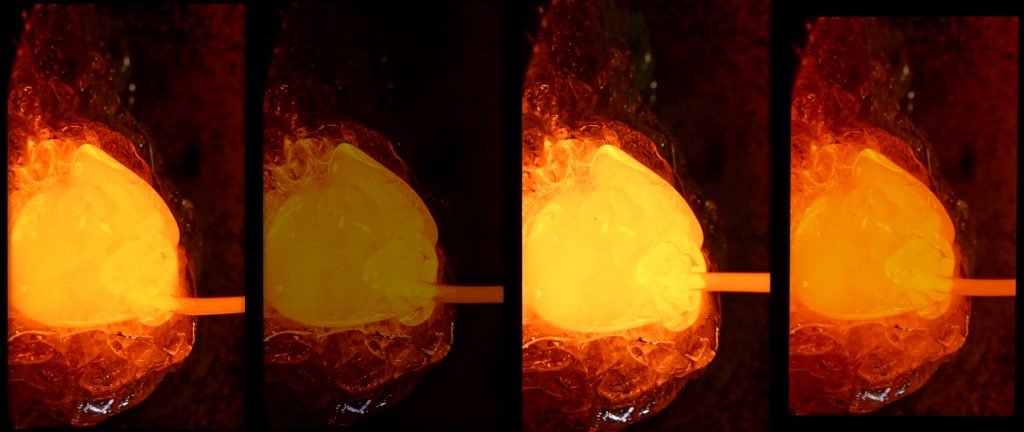
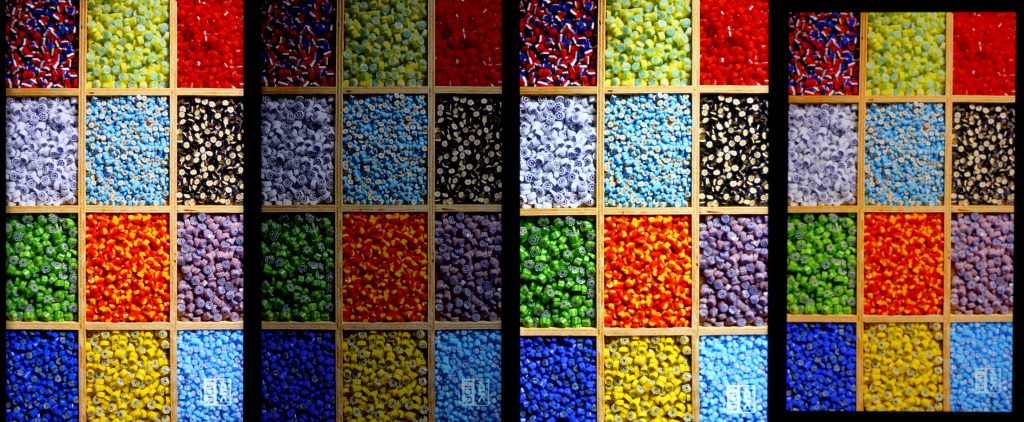

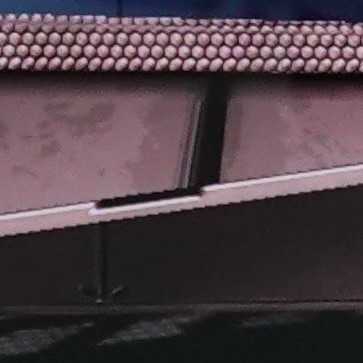


DXOMARK encourages its readers to share comments on the articles. To read or post comments, Disqus cookies are required. Change your Cookies Preferences and read more about our Comment Policy.